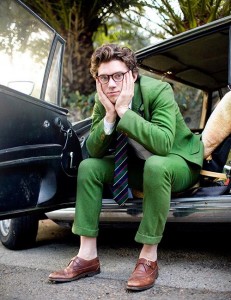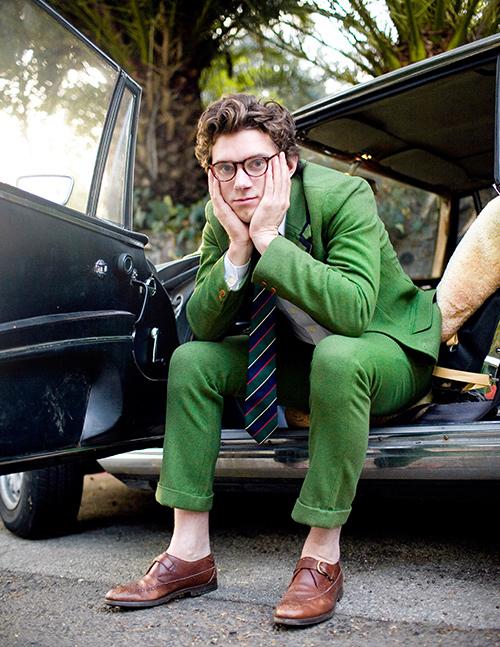 Off the Cuff was recently interviewed for a Washington Post Express article (below) on the impact of blogs on how men dress. Assistant Styles Editor Katherine Boyle, pulled together a great piece explaining how the rise of the menswear blog has helped guys become more comfortable with style.
Off the Cuff was recently interviewed for a Washington Post Express article (below) on the impact of blogs on how men dress. Assistant Styles Editor Katherine Boyle, pulled together a great piece explaining how the rise of the menswear blog has helped guys become more comfortable with style.
More importantly, many blogs, including OTC, provide the kind of context men seek when building their own personal style.
Please be sure to view the original article, at this link.
There’s one in every workplace. He sits at the cubicle across from you. Gregarious and well- groomed, he’s the star on your office’s kickball team. But he’s also a secretive character, hunched over his keyboard, closing windows with the haste of a hunted gazelle. Is he dabbling in soft-core pornography or high-stakes gambling?
A secret agent? Arms dealer? EBay overlord? No, chances are that innocent young dandy is just browsing men’s style blogs.
Long ago, in the old country, males visited trusted tailors for tips on fit and style. In the 20th century, fashionable fellows read lifestyle bibles such as GQ or Esquire in the seclusion of their own bathrooms; yet even there, a 100-page monthly couldn’t break the standard, sartorial tropes imposed upon them. Man was divided: urban or rural, white- or blue-collared.
The valiant wore vibrant flourishes such as studded cuff links or magenta socks, but, mostly, men dressed like their forefathers, who passed down style heritage like they would a good pocket watch: “[Suits] have to be new, yet they must look old. Filling the pockets of one’s new suit with stones and hanging it out in the rain is one possible solution,” said John Robert Russell Bedford in the 1965 classic “The Duke of Bedford’s Book of Snobs.”
But times have changed.
“Guys today have lost all sense of occasion. They’re not taught to dress for different circumstances,” says Glenn O’Brien, “The Style Guy” columnist at GQ magazine.
O’Brien’s newest fashion-cum-philosophical treatise, “How To Be a Man: A Guide to Style and Behavior for the Modern Gentleman” ($25, Rizzoli), links men’s wardrobe downfall to laziness, bad manners and rejection of history.
But man, ever the entrepreneur, found that the blog is mightier than the sword. The same Web culture that gave way to one-click purchases and 13-year-old viral pop stars preserved a culture of anonymity, a haven for eccentric alter egos once relegated to AOL chat rooms.
And so the stylish man emerged, posting on anonymous forums such as “Ask Andy About Clothes,” a 2001 precursor to menswear blogs, where style enthusiasts debate the construction of calfskin tassel loafers or flap- pocket oxfords. Shortly after, the style blogger arrived, making it hip, or, at least, socially acceptable for men to make videos called “How To Wear an Ascot.” Now, independent blogs such as “A Continuous Lean” (Acontinuouslean.com) or “Put This On” (Putthison.com) offer advice, as do popular brand offshoots such as UrbanDaddy Kempt (Getkempt.com).
“Some guys are shy to admit they’re interested in clothes, but we all want to look good and appropriate. Men want that information instantly,” says The Style Blogger (Thestyleblogger.com) founder Dan Trepanier, who was voted “The Best Dressed Real Man in America” by Esquire in 2009. “While a magazine will take a couple months to publish a story, bloggers publish within days and give men the vocabulary they’re looking for.”
And for men, immediate encyclopedic knowledge is the key for making fashion a masculine endeavor. Chris Hogan, who started the D.C.-based menswear blog “Off the Cuff” (OffthecuffDC.com) five years ago, finds that men are comfortable talking about clothing, so long as they’re given historical context. “It’s different than the way women talk about fashion. Men want context for what they buy. That information is now available. It’s not, ‘I’m wearing these jeans because Brad Pitt bought them,’ it’s more, ‘I’m wearing these jeans because they were made in a factory in Raleigh, N.C., using traditional techniques.’ The heritage, updated preppy movement put menswear in a new context, especially in Washington.”
Trepanier finds that men are more forthcoming about their interest in clothes because so many bloggers are average Joes. “There’s still a stigma surrounding the fashion industry, but blogs have done a service for regular guys,” he says. “I grew up on a farm in Canada and played basketball. That makes fashion seem more OK.”
Retailers and designers view blogs favorably, too. Philip Soriano of D.C. men’s shirt company Hugh & Crye (Hughandcrye.com) sees that guys are more familiarized with styles and taste. “In the past few years, we’ve seen a lot of our customers reading specialized fashion blogs. They know the collar and fit they want. Any blog that highlights fit is a bonus for us.”
Besides providing a shame-free place for dudes to scour trends or watch “how-to videos,” blogs have democratized men’s style, making eccentric sartorial choices available to any guy, whether he lives in Williamsburg or Wichita. “TV sort of homogenized everyone, and for a while, everyone dressed the same,” O’Brien says. “But the Internet changed that. It’s the great cultural medium that’s taking things out of the hands of monopolies.”
And even Washington, one of the last bastions of baggy suits and Dockers, is changing with the times. “I’ve noticed a lot of younger guys in D.C. dressing great,” Hogan says. They’re more comfortable with customization. It’s almost as if they’re rebelling against their parents by dressing well.

“Kickball team” LOL!! WTF?!
My office has a drinking team and a fornicating team.
I’m a star player on both.
LBF, I absolutely believe you. Been a while, good to hear from you.
Kudos on being featured in the story!